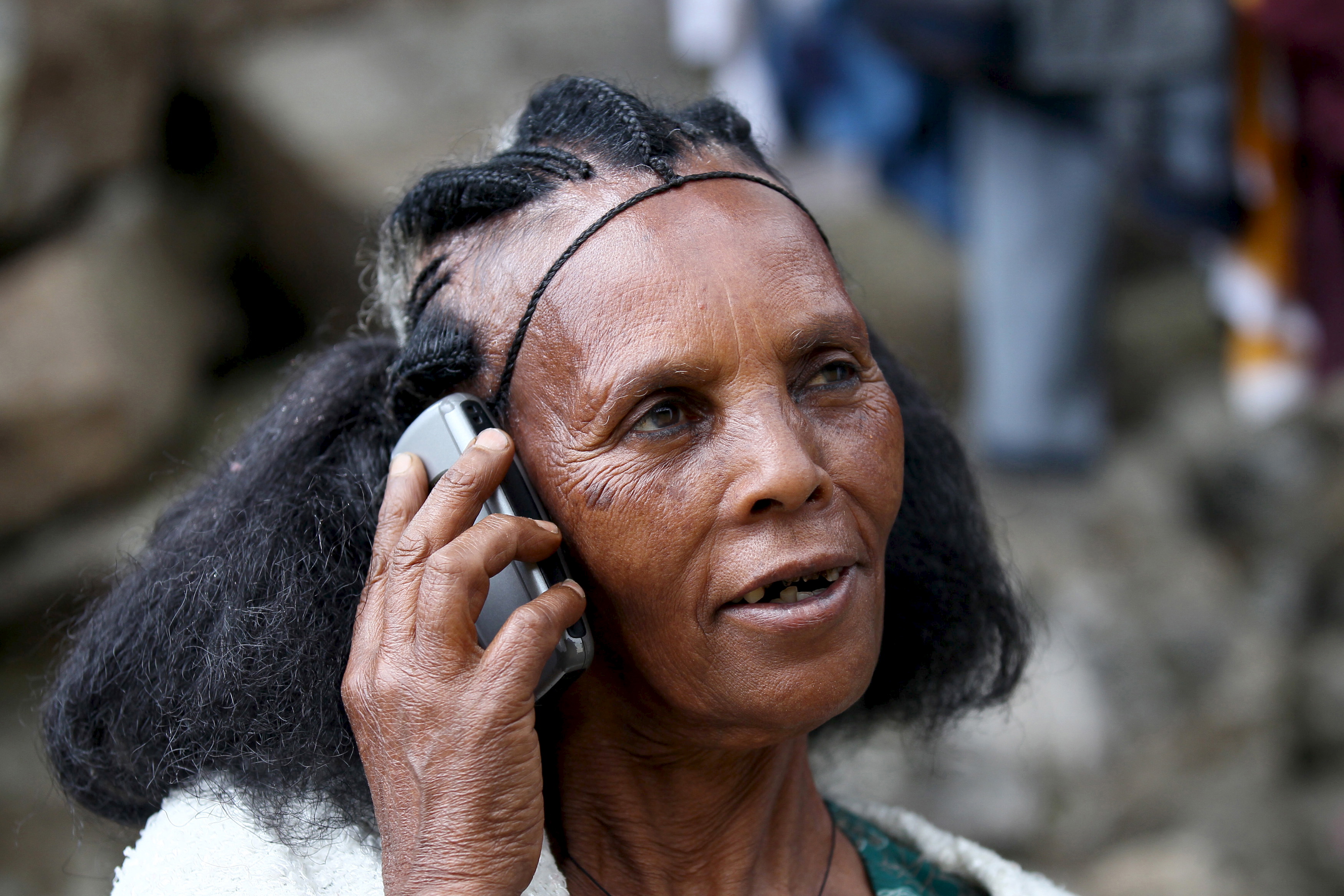
A woman makes a call on her mobile phone in Ethiopia’s capital, Addis Ababa, Nov. 9, 2015. Ethiopia’s state-run telecoms monopoly will launch a tender in December or January to upgrade infrastructure and expand mobile phone coverage by about 72 percent, the company’s chief executive said. (Reuters)
Sub-Saharan Africa is projected to reach 100 percent mobile penetration by 2021, with smartphone subscriptions accounting for nearly 95 percent of the region’s mobile data traffic.
The region will see “a significant shift to mobile broadband” in the next few years as more people look to mobile devices for Internet content and data-intensive apps, said Ericsson’s Strategic Marketing Manager, Monika Byléhn, in an email interview.
The growth is driven by a large youthful population looking for new consumer products and a confluence of other factors, including the absence of fixed broadband networks, evolving regulatory policies, rising urbanization levels and consumer spending, growing investment in rural mobile network coverage, and the proliferation of lower-end smartphones, some of which can be bought for about $50.
“Today, total mobile subscription penetration in Sub-Saharan Africa is estimated to be 80 percent,” said Byléhn. Five years ago, the region’s mobile penetration hovered above 50 percent, according to Ericsson’s 2015 Sub-Saharan Africa mobility report.
But current mobile subscription numbers are hard to come by, given that the number of subscribers is lower than the number of subscriptions.
The reason for this, explained Byléhn, is that in parts of Africa, “consumers optimize pricing by using different operators for different calls. We are not able to share a subscriber figure for the region, but on a global basis, we estimate there are 4.9 billion subscribers, versus 7.3 billion mobile subscriptions.”
By 2021, Byléhn projects the next generation of mobile technologies will account for almost 80 percent of the region’s subscriptions and triple the coverage to include around 75 percent of the population.
New technologies, such as Wideband Code Division Multiple Access (WCDMA), High Speed Packet Access (HSPA) and Long-Term Evolution, also known as 4G LTE, are gaining ground. But legacy mobile telecommunications like the Global System for Mobile Communications (GSM) and Enhanced Data Rates for GSM Evolution (EDGE) still account for more than 70 percent of total mobile subscriptions.
Mobile broadband is already the preferred way to access the internet in Sub-Saharan Africa. Up to 83 percent of Nigerians, for example, use broadband exclusively for Internet content, according to Ericsson ConsumerLab research.
The benefits of broadband connectivity in that part of the world “cannot be overlooked,” said Byléhn, given that increased connectivity “improves the prospect of financial inclusion for the 70 percent unbanked through mobile money services starting to take form across Africa.”
The introduction of mobile data options, some designed to accommodate low-income customers, is already fueling an array of new services geared toward individuals and industries alike. “Mobility is a driver for transformation in the financial, agriculture, healthcare and even the media industries in Sub-Saharan Africa,” said Byléhn.
The Sub-Saharan region relies heavily on farming. Farmers account for more than half of Sub-Saharan Africa’s workforce and up to a third of the region’s GDP.
Mobile-based solutions, added Byléhn, are already helping African farmers “minimize economic risk by knowing when to plant their crops, as well as reduce the time it takes to get crops to the market,” thereby “improving the region’s socioeconomic environment.”
But Byléhn believes new regulation, industry innovation, and government and regional support are needed to maintain the region’s mobile growth.
Regional players are already eyeing millions of unconnected populations in Sub-Saharan Africa and are aggressively working to push broadband networks and new services in e-commerce, banking, healthcare and infotainment.
Stay tuned for next Friday’s post on Nigeria’s media landscape.

2 responses to “Sub-Saharan Africa Increasingly Going Mobile”
Aida, You must be new to the country and to the region.
Ethiopia has the lowest IT connectivity.
The ruling party wants the world to believe all is going well.
Guest what else? All tech [tele, social media] is monitored.
Have you heard of Zone 9 Bloggers? May be you should
investigate why they were jailed for 18 months and released
under pressure from international community.
Ps: I wonder why the “woman” does not have a name.
Thank you for your comment. The issues you are referring to in Ethiopia and many other countries are dealt with elsewhere. Here is a related link that might interest you: http://www.voanews.com/content/global-internet-freedoms-decline-fifth-year-in-a-row/3025985.html. This story, based on Ericsson’s mobility report, simply looks at mobile penetration in the region. The Reuters picture does not name the woman.